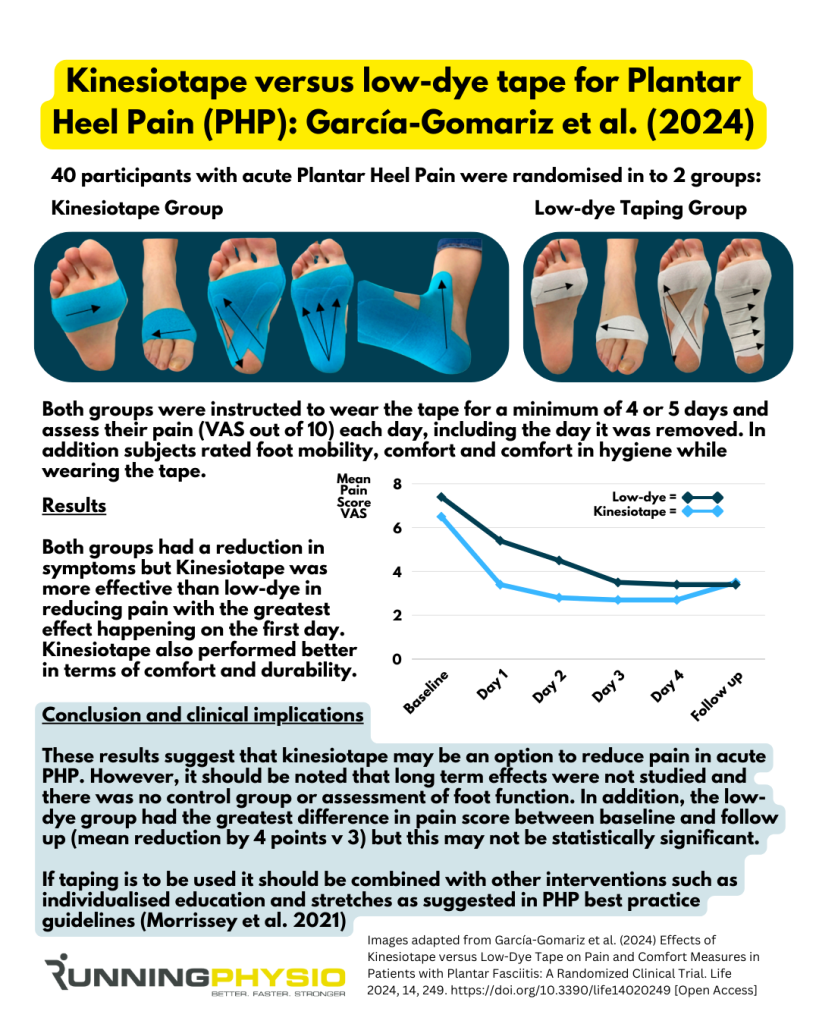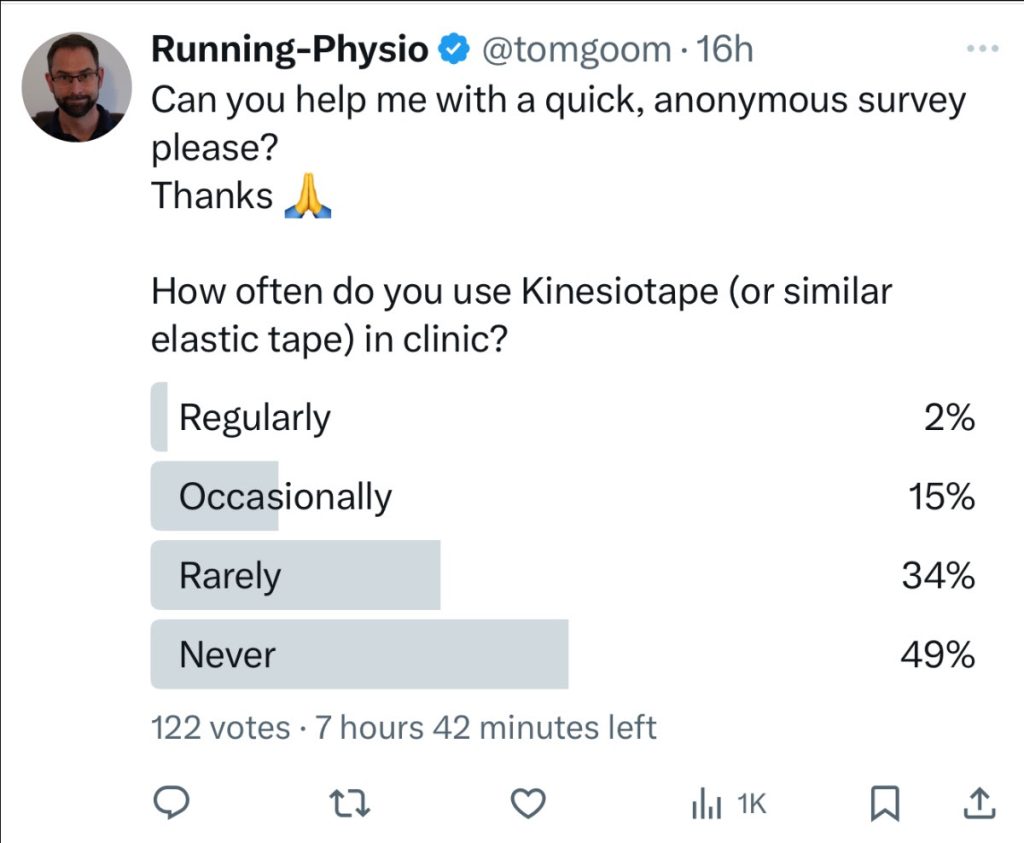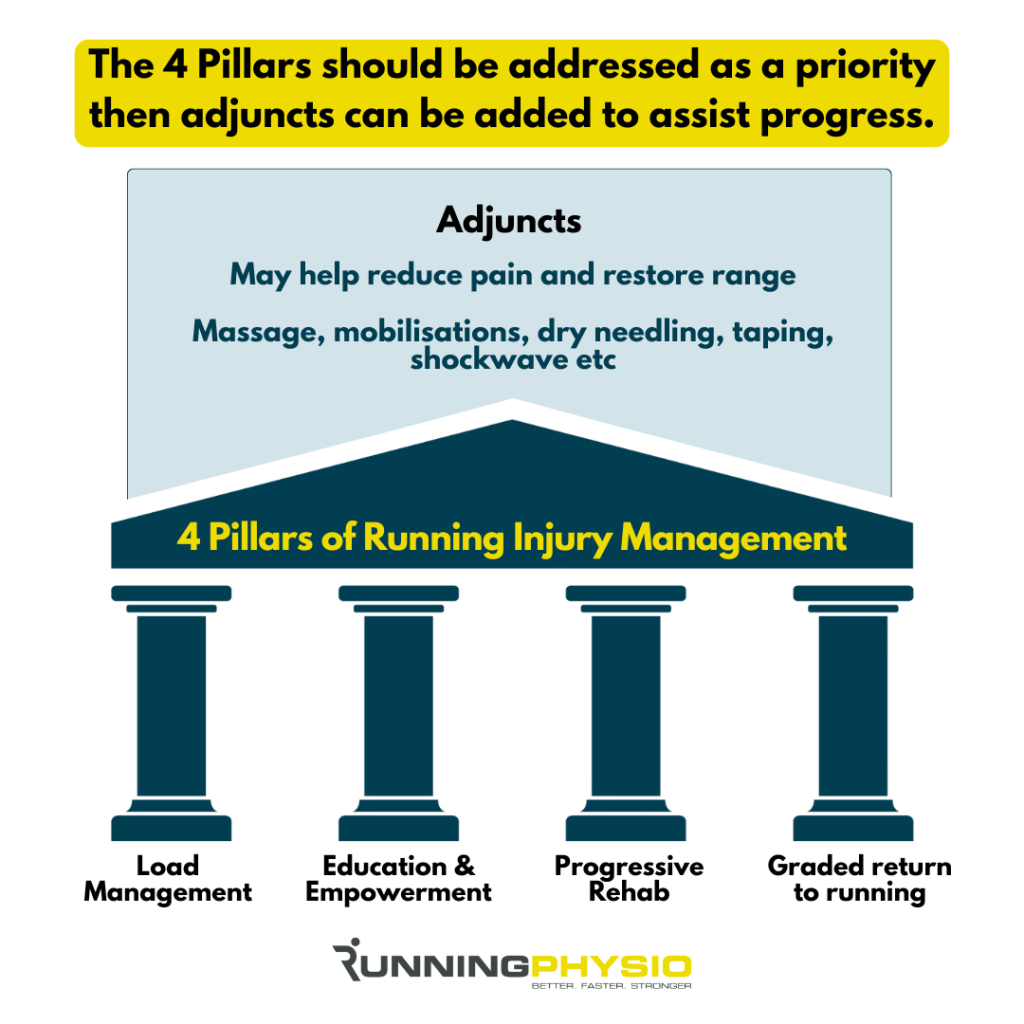
Our articles should not designed to interchange medical recommendation. When you have an harm we advocate seeing a certified well being skilled. For extra info see out Phrases and Circumstances.
The thought for in the present day’s electronic mail got here from a podcast from our associates on the Physio Community. I’d advocate having a pay attention, it’s a nice episode with Dr Melinda Smith.
Dr Smith discusses some latest analysis, and I wished to share that with you as a part of our latest collection of newsletters on Plantar Heel Ache (PHP). So we’ll discover this research, implications for apply after which the larger image with taping.
Kinesiotaping versus low-dye for plantar heel ache – García-Gomariz et al. (2024)
Right here’s a graphic abstract with a quick overview of the research:
It does appear that each taping methods might assist cut back acute ache in PHP. Kinesiotaping seems to get outcomes extra quickly, however as I discussed within the graphic, the general ache discount from baseline was very barely bigger within the low-dye group. This isn’t actually talked about within the research, so it’s not clear if this is able to be thought of statistically important or clinically significant.
I say might cut back ache, as and not using a management group, we are able to’t make sure if signs merely modified over time (as they typically do, particularly in acute displays).
I’d additionally add that there are a number of methods to tape the foot for Plantar Heel Ache, and this research solely compares two. Podiatrist Simon Bartold, founding father of Bartold Medical, shared a video of his taping approach. He’s fairly particular concerning the method, place of the foot and stage of assist wanted. Be aware how completely different that is from the approach in Dr Kevin Kirby’s video. Each are specialists of their area and vastly skilled.
I recognize these movies could also be a bit dated now, however they do present that ‘low-dye taping’ might look very completely different within the arms of 1 clinician versus one other, so we must be cautious in generalising the outcomes of this research.
Taping is just not with out controversy, particularly kinesiotape, which was utilized on this research. I can’t declare to be an knowledgeable in it. A short literature overview reveals an abundance of analysis with this tape getting used to deal with ache, swelling, proprioception, muscle energy and extra.
Nevertheless, whether or not it’s really efficient in any of those roles is definitely questionable. I believe many clinicians view it as a vibrant placebo, which can be why practically half of my followers that I surveyed on X say they by no means use it:
Earlier systematic critiques, similar to Parreira et al. (2014), have advised that present proof doesn’t assist using kinesio taping in medical apply. I did discover a more moderen overview, Tran et al. (2024), with extra constructive findings, however I’m but to analyse this in any element, so I’d advocate studying it in full earlier than making any conclusions.
Medical implications and larger image
When the purpose is to scale back ache within the quick time period, tape appears a really cheap possibility to contemplate. The selection of which sort of tape will come all the way down to the person and what their targets and desires are. We additionally want to keep in mind that some individuals are allergic to sure tapes, so this ought to be checked earlier than utility.
If extra bodily assist is required, then low-dye is extra prone to obtain this attributable to its extra inflexible nature. It doesn’t seem like as comfy or sturdy as elastic tape, although, so could also be higher suited to short-term utilization (e.g. throughout sport/ provocative exercise). Nevertheless, runners and athletes will sweat throughout sport and in my expertise, this may trigger extra inflexible tape to come back off. In apply, it’s often greatest to strive completely different choices throughout coaching to see what works and may be utilized if wanted throughout competitors.
If consolation and mobility are priorities (or inflexible tape comes off throughout sport), then elastic tape could also be preferable. If it’s properly tolerated and particularly efficient for signs, we might recommend utilizing it for as much as 4 days or consecutive purposes (e.g. each 3 or 4 days). Dr Smith mentions this in her podcast, and she or he advisable a time frame with out tape between purposes (e.g. in a single day) to keep away from pores and skin irritation.
Latest greatest apply pointers (Morrissey et al. 2021) assist using tape mixed with schooling and stretches. Koc et al. (2023) recommend tape (both inflexible or elastic) is used at the side of different remedies for short-term enhancements in ache and performance, and that is how I might have a tendency to make use of it in clinic.
I view tape as an non-compulsory ‘adjunct’ to our essential methods for managing working harm, ‘The 4 pillars’ (under). These methods must be in place first as a precedence, then we are able to think about adjuncts that may cut back ache or enhance vary or motion high quality:
Yet one more snippet on this that I wished to share comes from the Morrissey et al. (2021) greatest apply information, the place a number of the specialists interviewed for the paper used taping to foretell if foot orthoses could also be useful:
“If I tape them and their signs lower, after which I can say—okay, I believe I can replicate what the tape is doing with both sneakers or orthoses.” Knowledgeable 13, Morrissey et al. (2021).
In conclusion, tape may be helpful as a short-term technique to scale back ache or modify load, however I’d be desirous about long-term choices to revive capability and return folks to their chosen sport with no need to be strapped up!





